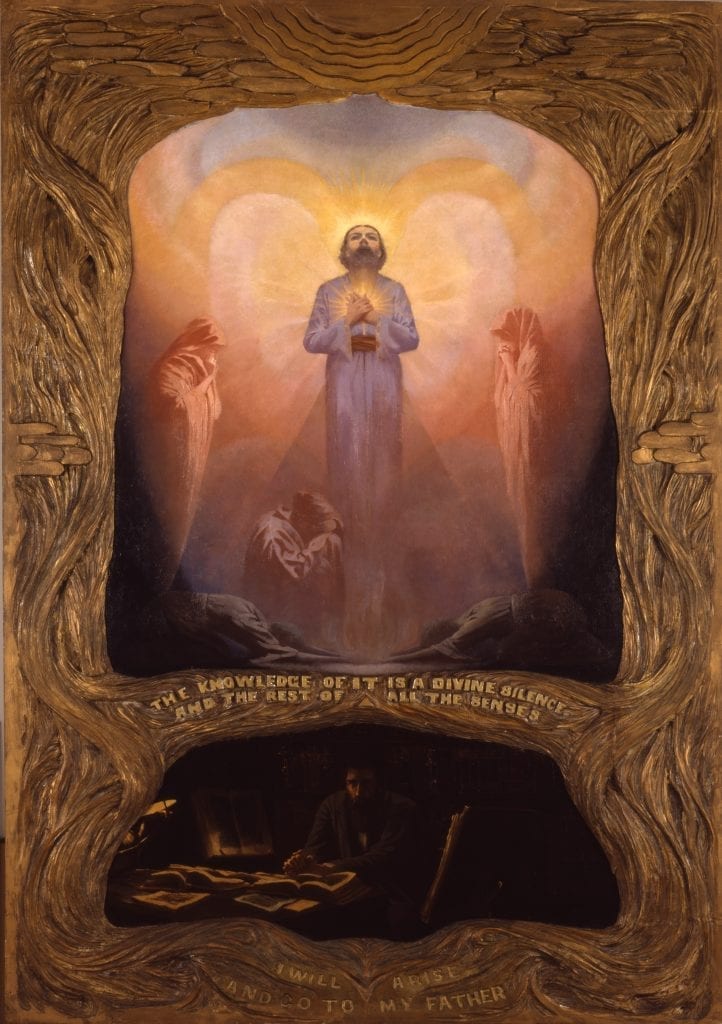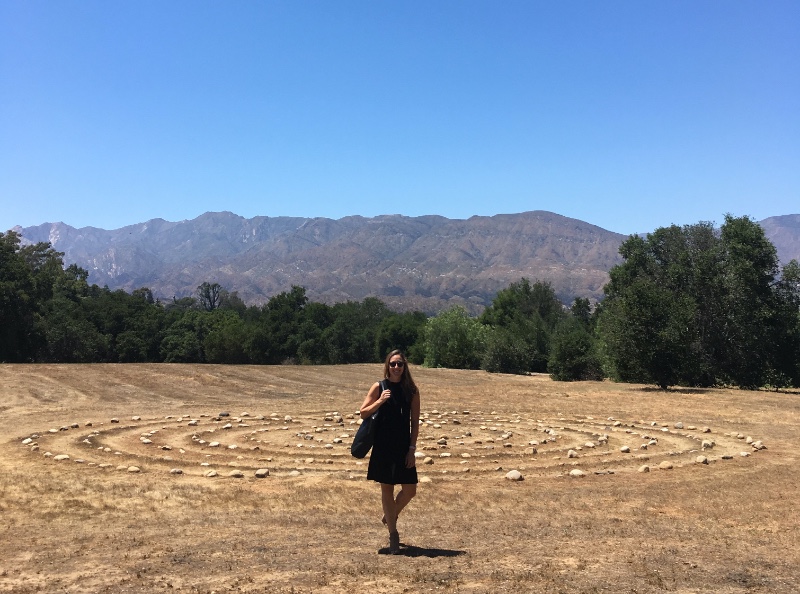Theosophical Art in Southern California
by Grace Converse
With the support of a Marie Zimmermann Summer Research Grant from the Decorative Arts Trust, I visited several sites throughout Southern California for my dissertation on creative production in two Theosophical communities: Lomaland in San Diego, CA, and Krotona in Los Angeles and later in Ojai, CA. My doctoral research in Art History at the University of Southern California asks how and why the arts were critical to the manifestation of Theosophical principals, especially the belief in a greater, unifying divinity among all humanity and across all religions. In my research, I examined objects and corresponding documents that will serve as case studies in my dissertation. These include carved furniture, ornate architecture, allegorical paintings, woodblock prints, books, and original musical dramatic works.
Among the artists at Lomaland was Reginald Willoughby Machell, a British painter, woodworker, and author who joined the Theosophical Society in 1896. Katherine Tingley, the society’s leader, invited Machell to serve as the director of the art department in 1900 at the newly founded headquarters. Machell then developed the arts education programs at Lomaland’s school where he also taught painting and woodworking. As a resident, educator, and artist, Machell’s work was used and seen on a daily basis in the community. His carvings furnished the site’s public and private spaces and served as set pieces for musical and theatrical performances, as the doors for Lomaland’s main temple, and as a “throne” for Tingley. He also carved frames for several of his paintings in which he abstracted the allegorical themes found on the canvas.
My summer research also brought me to Krotona’s current location in Ojai, where I studied how the community’s leader, A.P. Warrington, encouraged the melding of craft, fine art, pedagogy, publishing, and performance. I explored Warrington’s role in the organization of the Brotherhood of the Arts, which helped foster collaboration between members of the community who worked across artistic and craft disciplines. This Brotherhood in turn provided the creative foundation for Krotona’s 1918 dramatic, musical rendition of Sir Edwin Arnold’s poem, “The Light of Asia.” Members of the Krotona community contributed to the production not only as performers but also by designing original costumes, sets, and a new outdoor theater that was integrated into the landscape.
The labyrinth at Krotona is a meander that presents a single undivided path, following the seven-circuit Cretan pattern. No choices are needed other than traveling onward through the winding pattern to an assured goal. The seven circuits of the Cretan labyrinth correspond with the seven spheres of the sacred planets, the seven principles of the human being and the cosmos, the seven days of the week, and other such sevenfold meanings. I was interested in exploring the labyrinth as a site of continuity between Theosophy’s past and its present. While the labyrinth was not created until 1997, it represents foundational Theosophical doctrines and reflects the interests of Theosophists who founded Krotona in the early-twentieth-century.
These sites are only two examples of the Theosophical Society’s creative production I researched through the generous support from the Marie and John Zimmermann Fund and the Decorative Arts Trust. These case studies will provide a base for my continued study of how art, particularly craft and the decorative arts, were central to Southern California Theosophical communities. In my dissertation, I will explore how the Theosophists’ desire to teach, experience, and practice several modes of creative production represents a desire to not only to find unity across all humanity and religions but also to do so through a unification of the arts.
About The Decorative Arts Trust Bulletin
Formerly known as the "blog,” the Bulletin features new research and scholarship, travelogues, book reviews, and museum and gallery exhibitions. The Bulletin complements The Magazine of the Decorative Arts Trust, our biannual members publication.










